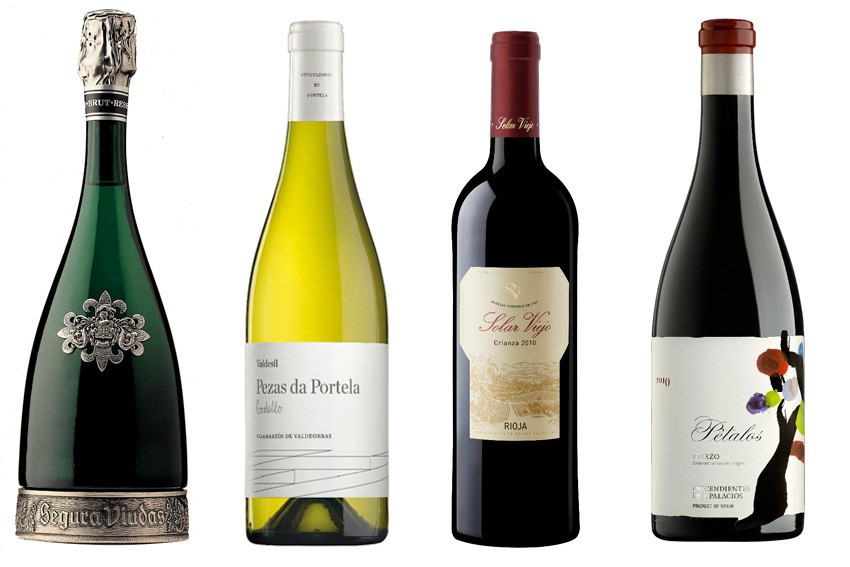A Tour Of Spain

No matter how you slice it, Spain is complex.
No matter how you slice it, Spain is complex.
Its many rulers and influences over the centuries, including the Phoenicians, Greeks, Romans, Moors and Christians, have all left their legacy in parts of the country. Spain’s human geography is no less complex with today’s 17 communities banded together under the Kingdom of Spain often operating quite autonomously. Geologically Spain’s terrain is diverse from the cool, green and rugged Atlantic Coast, to the inland desert landscapes and the maritime coasts of the southeast.
The same diversity is true of its wine industry that spans operations in various stages of evolution and approach. From large, affluent bodegas of Rioja and Penedes, to the small, artisanal wineries reclaiming the land in the northwest regions of Bierzo, Rias Baixas and Ribeira Sacra. Each region with a fascinating story to tell.
Here is a selection of wines, all available in Australia, from some of Spain’s winegrowing hotspots.
Segura Viudas Reserva Heredad Cava $50
Penedes, Spain
seguraviudas.com
Segura Viudas is situated in the wine region of Penedes west of Barcelona. The bodega or winery is an old stone building set among hills that roll and fold to the horizon. Lush forests and orchards surround the property and its vineyards. It’s a lovely setting for the winery that produces both Cava and table wines in an increasingly environmentally sensitive manner. But it wasn’t always this tranquil; the medieval tower that stands as the centrepiece of the winery hints at the region’s tempestuous history. In the 11th century, the region was at the crossroads of religious wars and the tower built to protect crops that blanketed the region. Today Penedes is the main Cava producing region in Spain and Cava is Spain’s answer to Champagne. It is made in the same traditional method as Champagne, but with local white grape varieties of Macabeo, Parellada and Xarel.lo. The Segura Viudas Reserva Heredad is the crown jewel of the Cava range. Taking more than three years to produce, it is a wine of richness, freshness and complexity, with the pewter-trimmed bottle only adding to the wine’s presence.
Valdesil Pezas da Portela 2010 $69
Valdeorras, Spain
valdesil.com
One man’s madness may well be the future generations’ fortune. High on a broken slate hillside in the Valdeorras region of Galicia, northwest Spain is the Valdesil Pedrouzos vineyard. Planted by grower José Ramón Gayoso in 1885, the 500 native Godello vines have thick, gnarled and twisted trunks. Some larger branches are propped on stacks of smooth rocks, like an elderly person resting swollen joints on a bench. At the time, Gayoso was considered mad to plant a straight Godello vineyard but, convinced of the variety’s potential, he insisted. As well as two world wars and the Spanish civil war, the Pedrouzos vineyard has survived the virtual demise and subsequent rise of Godello – at one point only a thousand square metres remained until an industry program reversed the decline. Just as Gayoso provided offspring to continue the winemaking business, the Pedrouzos vineyard has supplied much of the material for Godella’s revival, in particular, the 10 ‘pezas’ or plots that make this wine, the Pezas da Portela. Complex, fleshy with layers of fruit, acidity and a lovely texture, it’s a wonderful introduction to a variety experiencing a very happy renaissance.
Solar Viejo Crianza 2010 $25
Rioja, Spain
solarviejo.com
Laguardia is a charming medieval village built high on a hill in the north of Rioja, in the Basque province of Alava. Because of the breathtaking views from the hill it was built as a defensive town to guard the neighbouring region of Navarra; hence the name, ‘La Guardia de Navarra’. To the north, the view sweeps across vineyards and farmland, until the Cantabrian Mountains jut up, grey and jagged, protecting the region from the cool winds that blow off the Atlantic Ocean. To the south is the snaking Ebro River, which forms the natural boundary between the sub-regions of Rioja. These natural features create a cocoon of ideal weather for winegrowing. Bodegas Solar Viejo originated in Laguardia, its name coming from ‘Casas Solariegas’, the noblemen’s houses where the first Solar Viejo wine was made. Now the winery is situated a short drive away at the base of the Cantabrian Mountains. This 100% Tempranillo Crianza has bright red fruit, spice, vanilla and liquorice, soft tannins and a fresh and elegant finish. If possible, enjoy with the view from Laguardia.
Descendientes de J. Palacios ‘Pétalos’ Mencia 2010 $49
Bierzo, Spain
bodegasricardopalacios.es
Driving through Ricardo Palacios’ vineyards in the hills around Villafranca del Bierzo in northwest Spain, you get the feeling nature is only just being held back. Vineyards don’t dominate so much as dot the landscape between cherry, almond and apple trees and small plots for farm animals. There is no large-scale wine industry here and many vineyards are managed as subsistence farms. For Palacios, who first moved into the region in 1998, working with these plots has made the job of crafting biodynamic wines an easier one; “they are already in harmony and balance with nature.” Palacios’ focus is the native red grape Mencia, another variety enjoying a renaissance, and for good reason. Mencia makes a medium-bodied, elegant red wine offering red fruit, spice and earth among its many virtues. As well as making some of the most exciting versions of Mencia in Spain, Palacios also takes an holistic approach to the community where he has established a school to teach skills including cheese making, farming and winegrowing: “People are not using these skills and if we don’t teach them, they will be lost”. Exciting wines, wonderful approach.